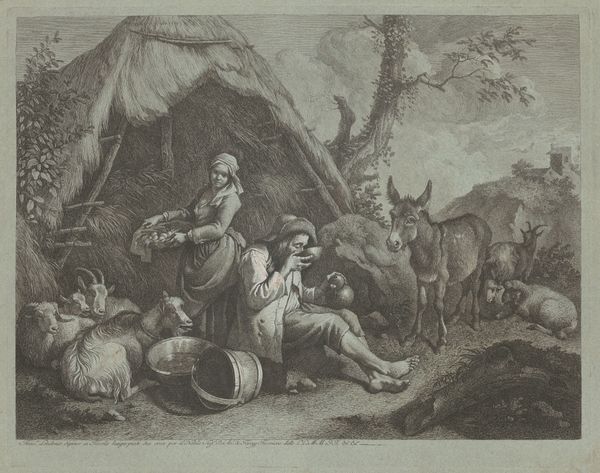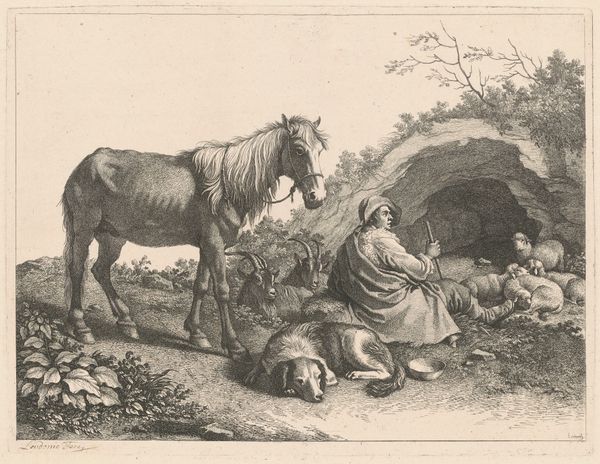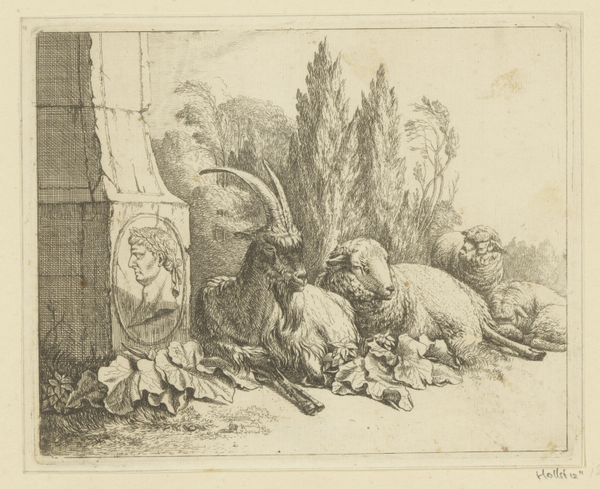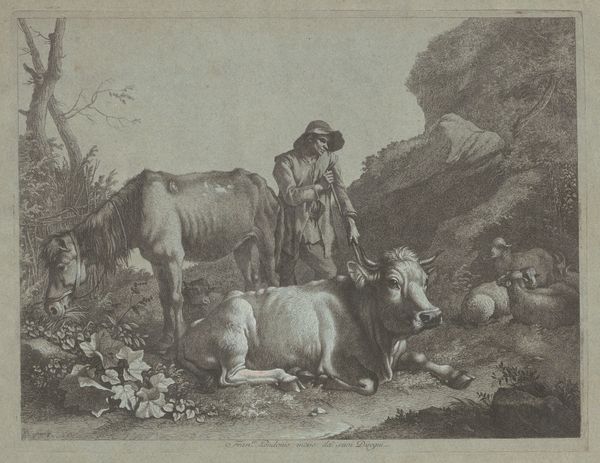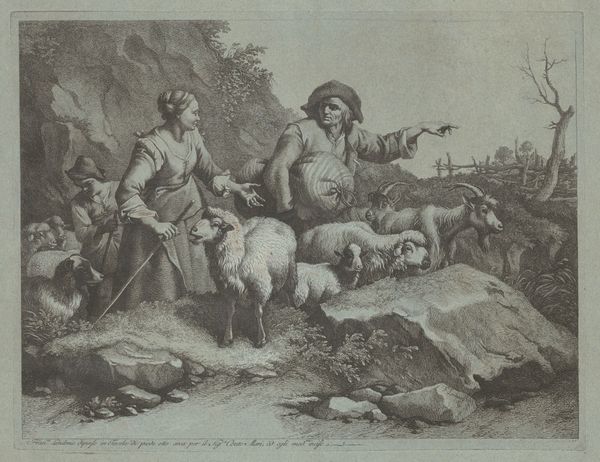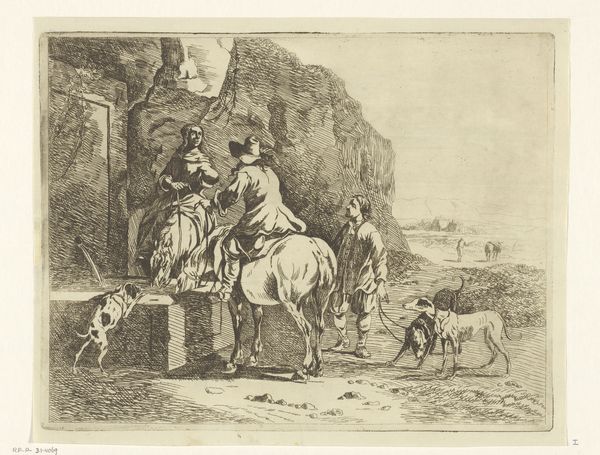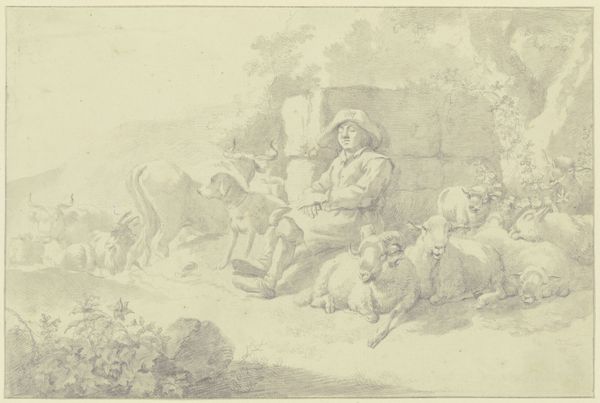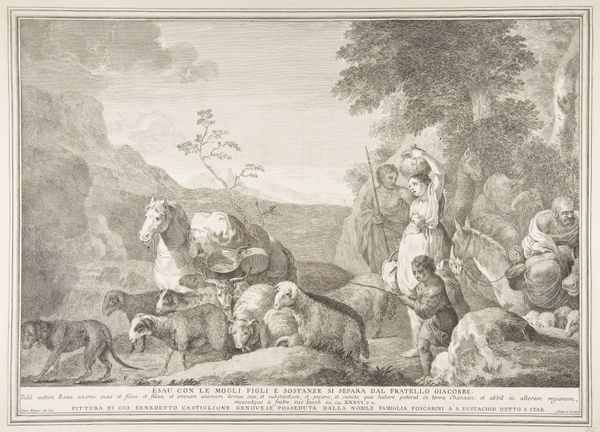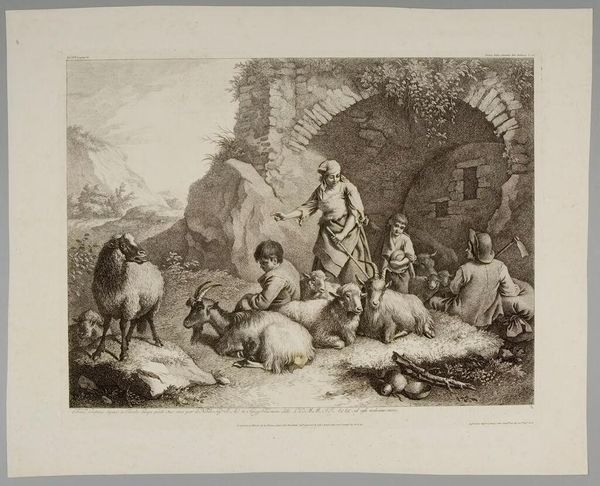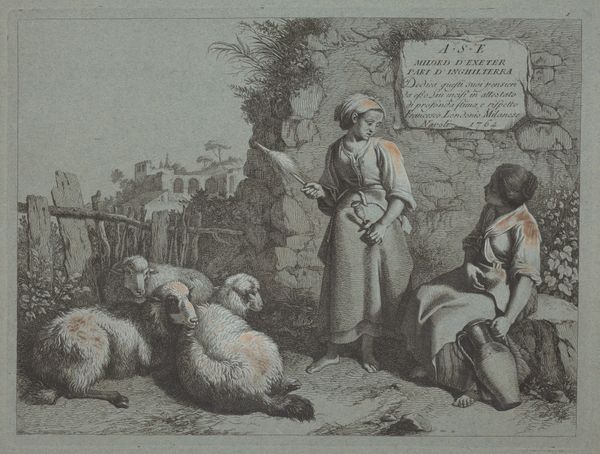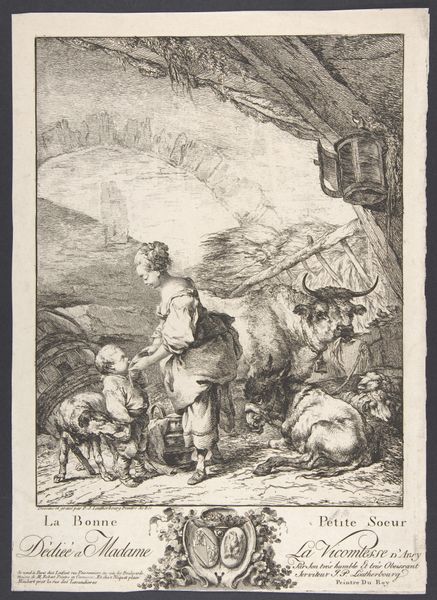
Dimensions: plate: 33 × 42.1 cm (13 × 16 9/16 in.) sheet: 39.8 × 50 cm (15 11/16 × 19 11/16 in.)
Copyright: National Gallery of Art: CC0 1.0
Editor: Here we have Francesco Londonio's etching, "Woman, Shepherd Boys, and Sheep near an Arch," created between 1759 and 1782. It strikes me as a fairly conventional pastoral scene, but there's something about the woman's gesture that feels significant. What do you see in this piece beyond its surface-level depiction of rural life? Curator: It’s tempting to see a simple genre scene, but let's dig deeper. Consider the historical context: the late 18th century was a period of profound social upheaval. Londonio, as an Italian artist, was working within a society on the cusp of radical change. This image, with its carefully staged naturalness, presents an ideal. But whose ideal? It’s a constructed vision of rural life, not necessarily a reflection of lived experience. Look at the woman; is she a nurturing figure, or someone enacting a prescribed role? Editor: That's interesting. I hadn’t thought about it as a staged ideal. So, the very act of representing this scene becomes a political statement, in a way? Curator: Exactly! Think about who typically consumes and perpetuates such imagery: the upper classes, seeking to legitimize their social order. Londonio, knowingly or not, is participating in the construction of a particular kind of narrative, one that reinforces a certain power dynamic between the land, the people, and the ruling class. What do you think about the children’s poses, for example? Editor: Now that you mention it, their stillness seems a bit… forced? It makes me question how aware Londonio was of these nuances and the role they played in this landscape. Curator: That ambiguity is crucial! It allows us to have this conversation. What we learn from art isn't just about the artist's intention, but also about the societal values reflected and potentially challenged within the piece. Editor: This has given me a completely new perspective on what I initially thought was just a charming scene. Thanks! Curator: Absolutely! These kinds of dialogues are key to understanding not only the artwork, but also ourselves and the narratives that shape our world.
Comments
No comments
Be the first to comment and join the conversation on the ultimate creative platform.
